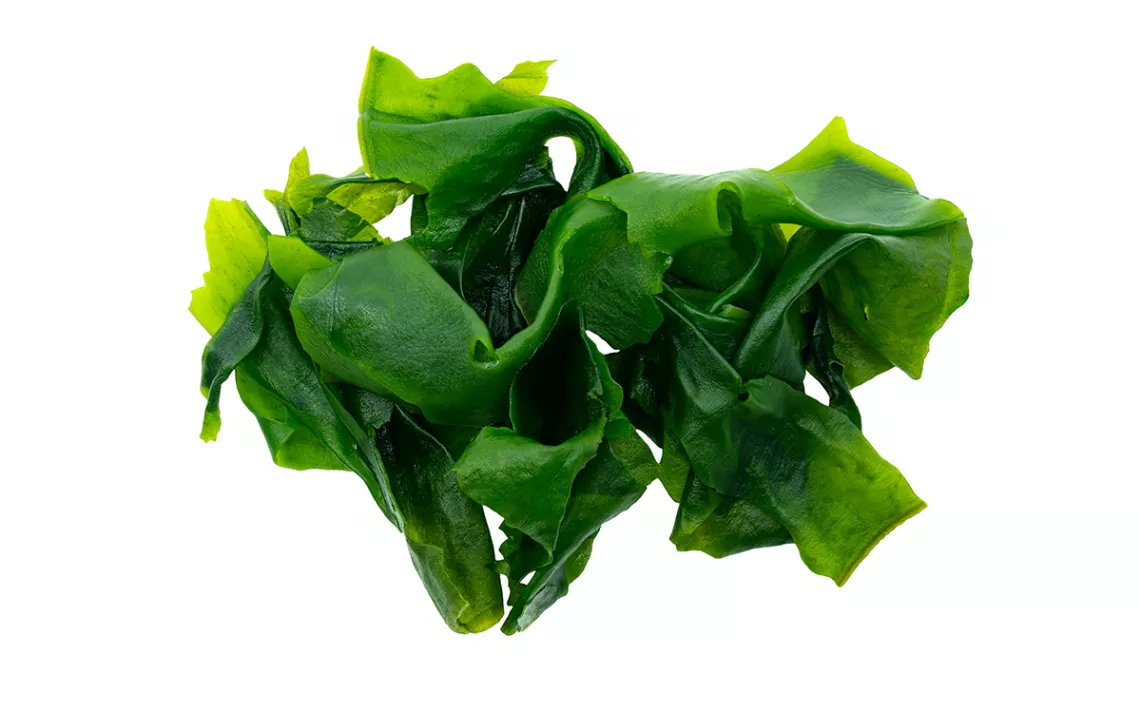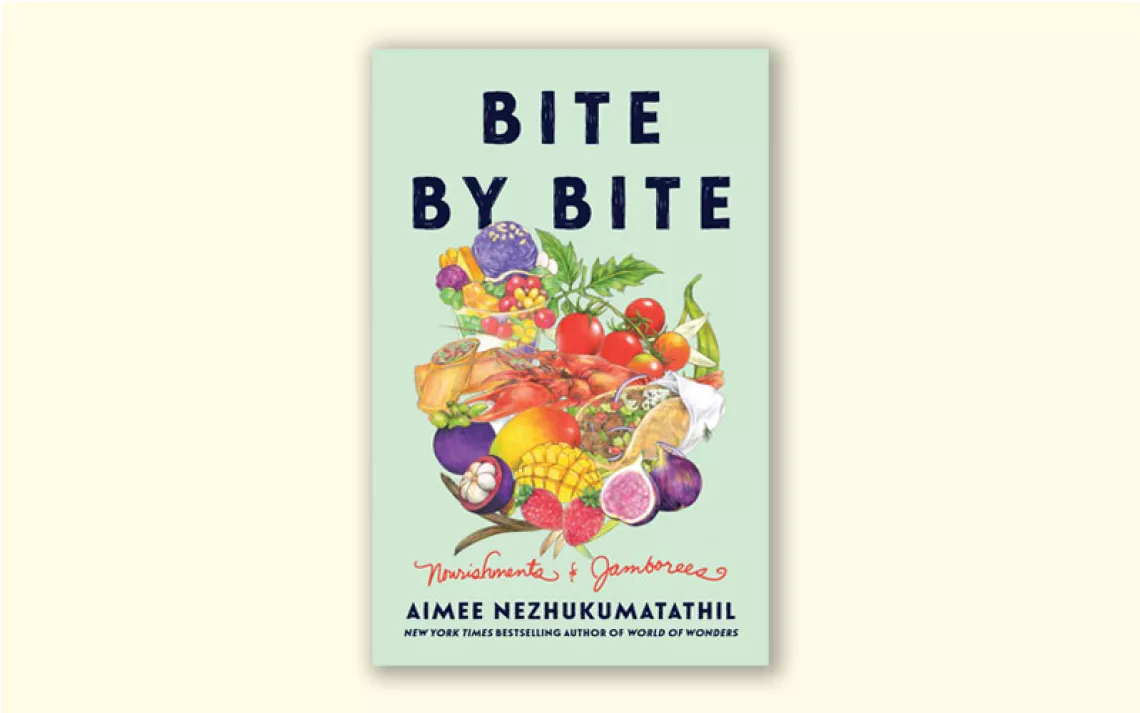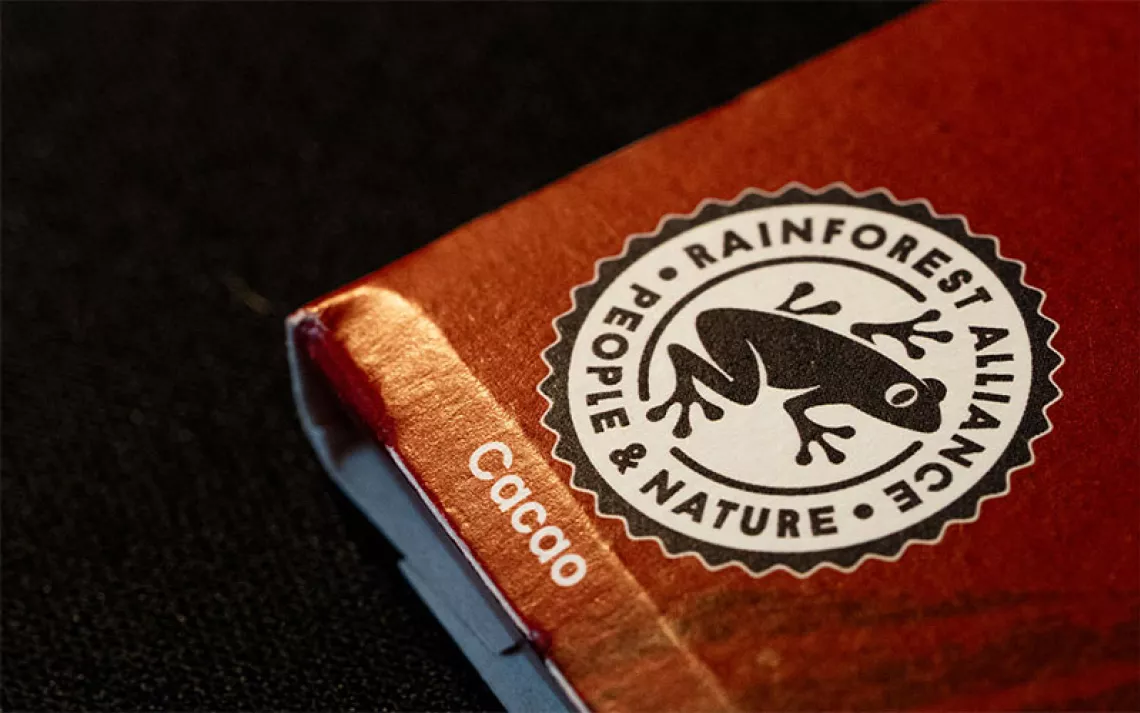How to Cook With Seaweed (and Why You Should)
It's sustainable, it's healthy, and it tastes good

Photo by somdul/iStock
Despite its role in traditional cuisines around the world, fresh seaweed rarely plays a role in American kitchens. The US imports about 95 percent of the edible seaweed used here, and nearly all of it is dried. When Alanna Kieffer started selling dulse at the farmers' market near Oregon Seaweed’s Garibaldi farm, she learned what the general public knew about her crop: not much. “They would walk up and be like, ‘Oh, seaweed. I hate that stuff.’” But their experience with sea vegetables extended only as far as the processed, packaged, nori common at sushi restaurants.
The fresh red dulse that Kieffer farms on the edge of Tillamook Bay has more in common with the land-grown greens at nearby stalls than with nori. She offers samples, cooked with garlic and butter to change minds. “It tastes like a salty carrot,” she explains, and it works in recipes much like spinach or kale.
For home cooks seeking nutritious ingredients while minimizing their diets’ environmental impact, seaweed stands out as a potential star, and domestic varieties are getting easier to find. Kelp farming is growing rapidly on both coasts, and land-based dulse farms show the algae's potential as a year-round crop.
“[Eating seaweed] is kind of like putting our money where our mouth is in a lot of ways, especially sustainable food sources,” said Luca Ponti, the chef of Portland Cookshop. When farmed in tanks of saltwater, as at Oregon Seaweed, red dulse grows rapidly, pulling nutrients from the sunlight and seawater. It requires little intervention or energy use beyond pumping water into the tanks. It also contains protein comparable to meat or meat replacements, every essential amino acid, and tons of important nutrients: iron, vitamins, fiber, and omega-3 fatty acids. Four pounds of farmed dulse sequester a pound of carbon.
But, as Kieffer learned at the market, most people don't understand how good seaweed tastes and how easily it incorporates into all types of food. “It has this umami element that I think is really lovely," said Ponti. "There are also these briny notes, so a lot of essence of the sea.” He looks to seaweed to add salt but also texture, comparing the chew of fresh dulse to curly kale. “If I want it to be softer, like, soften it up, maybe I'm going to sauté it, and the saltiness brightens up.” The versatility makes it work for warm, roasted winter dishes and cool, fresh ones in summer. In a recent class, Ponti taught students to roast dulse at 200℉ to turn it into a crunchy garnish for rice bowls, or crumble over salad or scrambled eggs.
“[Eating seaweed] is kind of like putting our money where our mouth is in a lot of ways, especially sustainable food sources."
Briny, salty, and full of umami flavor, dulse can be fried up to a crunchy snack. On the company’s blog, Kieffer shares recipes for making dumplings, potato cakes, salads, and soups. A chef at a restaurant nearby works dried dulse into butter, along with wild chanterelle mushrooms, while a pizza place dusts it onto pies. If you don’t live near a farmers' market with a dulse purveyor, you may need to shop online to find the fresh version. Oregon Seaweed sells both fresh and dried dulse on its website, while Monterey Bay Seaweeds sells it fresh. Many natural foods stores sell dried dulse, and even larger grocers such as Whole Foods stock it in small quantities. Dried dulse can be crisped up in a pan for baconlike use in a sandwich, added to soups or stews to rehydrate and add flavor, or used as flakes, sprinkled over rice, scrambled eggs, or salad.
Ponti's class also incorporates kelp, which provides a good entry point for seaweed-curious cooks. It grows in ocean-based farms that share many of the sustainability features of the land-based dulse farms: absorbing carbon, de-acidifying the ocean, and improving water quality. Ponti demonstrated turning kombu, one of the more common types of kelp, into a Japanese dashi base for miso soup, and even infusing it into chocolate ice cream.
Since the kelp harvest happens only once a year, mostly in spring, it’s generally sold as a prepared food, which makes it a little easier to find. Barnacle Foods uses both farmed and wild kelp to make pickles, sauces, and seasonings in Alaska. Brooklyn-based Akua produces burgers and “crab” cakes made of Maine kelp, while 12 Tides puffs it into chiplike snacks, sold at grocery stores around the country. Dried kelp (including the most widely available form, kombu) adds a big but gentle umami hit to soups, stews, beans, and broths.
Maine’s long-running, well-established permitting process encourages new farms and means the state dominates the industry, harvesting 325,000 pounds in 2019. Alaska trailed Maine in 2019 with 250,000 pounds, but more than doubled that in 2021. No other state harvested even a tenth of that, and the situation in Washington demonstrates why: The state's one kelp farmer operates on an inherited experimental license, and nine future ocean-based seaweed farmers are bogged down in evolving regulations, something that land-based farms deftly side-step.
In Alaska, the Native Conservancy’s Indigenous Ocean Farmer Immersion Program aims to help Indigenous farmers in Alaska avoid just that situation, so they can use their traditional knowledge and ancestral waterways to grow and harvest kelp. In the first three years of the program, started in 2019, it helped place nine kelp research sites and a commercial farm, and to submit more than 15 kelp farm site permit applications. The resulting harvest then dovetails into the organization's Indigenous Food Sovereignty program as part of nutritional ready-to-eat meals using traditional ingredients for Native elders.
In Hawaiʻi, organizations such as the Pacific American Foundation and Waimanalo Limu Hui do similar work to rebuild the diversity and knowledge of limu, as seaweed is called there. Restoration advocacy group Kuaʻāina Ulu ʻAuamo worked with the governor to get 2022 declared “The year of limu” in the state. As part of that, the Hawaii Sea Grant rereleased a cookbook it published in 1978, The Limu Eaters, which features dozens of varieties in more than 85 recipes, including in poke, the most common use in the state. But it also works seaweed into guacamole, omelets, and a limu olive martini.
The book demonstrates the adaptability of seaweed, same as Kieffer aims to explain to customers: Using seaweed in the home kitchen requires little more than a willingness to try putting chopped kombu in your tomato sauce in place of anchovies or trusting the cultures who have used these foods for centuries, like in the Korean soup, miyeokguk. "Be inquisitive," advises Ponti on how to get started cooking with seaweed. He recommends tasting it raw and playing around with it to see what you like. "Open yourself to learning, and be curious."
 The Magazine of The Sierra Club
The Magazine of The Sierra Club



